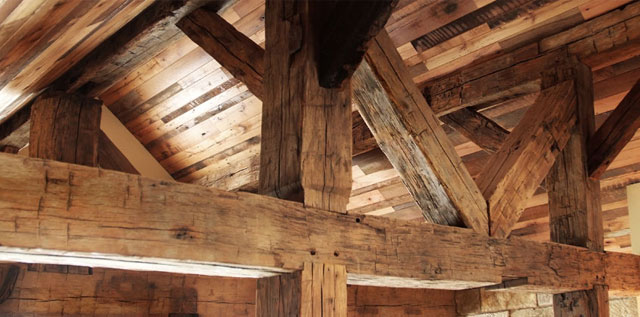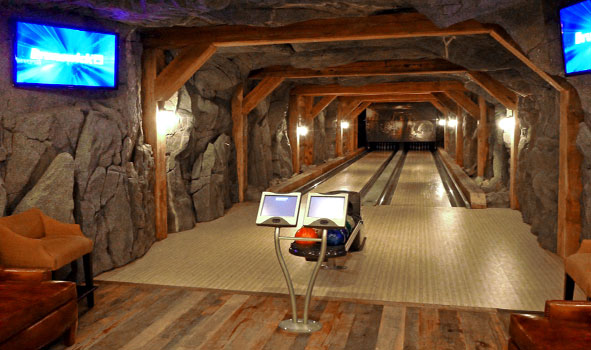
Hewn to Last - The Story Behind the Beam
One of the most recognizable ways the mystique of the American barn is incorporated into interior design is through the use of reclaimed beams.
Their size, shape, and texture present a three-dimensional display of history that demands attention by jutting into the foreground of a space. Not surprisingly, the story behind these beams is as fascinating and antiquated as their appearance suggests.
As farmers tamed the American frontier, one of their first and most critical steps was clearing large amounts of land for pasturing animals and growing crops. In addition to creating necessary open space, this selective deforestation also supplied the farmers with the raw building materials needed for the structures that would support their families and enterprises. In addition to large amounts of fieldstone that were used for the foundations of barns and houses, they also utilized the felled trees by transforming them into the iconic beams that framed the most important structure on the farm—the barn.
A close inspection of the harvested timbers revealed which of them would make for the straightest, truest, and strongest beams. Preferred species varied geographically, but oak, chestnut, and maple were common selections. After the cream of the forest crop had been chosen, the logs were skidded to the barn site and rough-hewn into beams with axes. Larger beams were often further processed with a tool called an adz. The adz work would further square the beams but still leave hewing scars behind. Smaller logs, used as braces in the framework of the barn, were often transported to water-powered mills to be sawn square or simply left round.
Once the beams were shaped they were assembled on the ground into sections called bents, usually made up of two vertical posts and one crossbeam (also called a tie or girt). The bents were held together by mortise-and-tenon joinery. The bents were then raised into place and attached to one another. This step became a part of American lore, as barn raisings required the help of many hands and were a major event in the social framework of agrarian communities.

Their place in Americana is evident in the look and feel of the beams today, often well over a century after they were hewn. Incorporating a reclaimed beam into any space adds not only a piece of timber that was carefully chosen by a farmer as the best his land had to offer, but also the history of its careful shaping, meticulous assembly, and communal raising. With the options of preserving the hewing scars on all four or only two sides, as well as the option to re-saw a beam entirely, Olde Wood Ltd reclaimed hand-hewn barn beams allow these relics of the American frontier to be incorporated into any project.
Tell us in the comments below what types of projects you can imagine using a reclaimed beam for, or check out these photos of the creative ways they have been added to beautiful spaces!